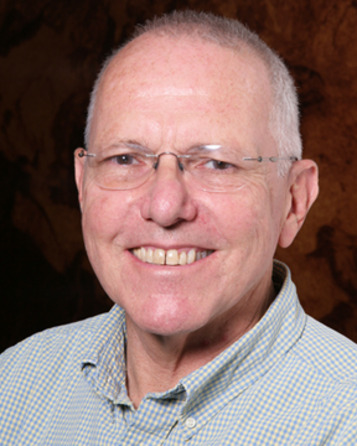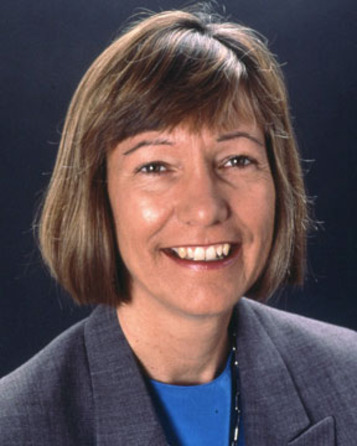- Home
- About LPL
- History of LPL
- Department Heads and Directors
Department Heads and Directors

Gerard P. Kuiper
1960-1973
Gerard P. Kuiper
×
Gerard P. Kuiper (1905-1973) is considered by many as the father of modern planetary science. Kuiper was born in The Netherlands. He entered Leiden University in 1924 and received his Bachelor of Science in 1927 and a Ph.D. in Astronomy in 1933. While completing his advanced studies, he worked as an assistant observer at the Leiden Observatory (1928-1933). From 1933-1935, he was a Kellogg Fellow under American astronomer Robert Grant Aiken at Lick Observatory. In 1935, Kuiper visited Harvard College Observatory as lecturer in Astronomy. He accepted a job at Yerkes Observatory (University of Chicago) in 1936 and was named Director of the Yerkes and McDonald Observatories in 1947. He studied the atmosphere of Saturn’s moon Titan in 1944, the carbon dioxide atmosphere of Mars in 1948, Uranus’s satellite Miranda in 1948, and Neptune’s satellite Nereid in 1949.
In 1955, Gerard P. Kuiper posted a notice on the message board at the International Astronomical Union conference in Dublin; he was looking for assistance in creating a lunar atlas. The only person to reply to his inquiry was Ewen Whitaker. This was the beginning of a long, successful collaboration that ultimately produced four lunar atlases (see details below) and led the duo to work on NASA’s Ranger and Apollo missions. The work on the atlases was begun at Yerkes Observatory in the 1950s. In 1960, Kuiper resigned from Yerkes Observatory and moved to Tucson and founded the Lunar and Planetary Laboratory (LPL), where he and Whitaker continued their work.
In the 1960s, Kuiper served as Principal Investigator for the NASA Ranger program and as an experimenter on the NASA Surveyor program. He helped identify landing sites on the Moon for the Apollo program. Kuiper established a group of telescopes in the Santa Catalina Mountains above Tucson; made balloon spectroscopic observations of the Earth’s atmosphere; and conducted observatory site surveys in Hawaii, Mexico, and California. Kuiper served on numerous NASA committees and panels and briefed high government officials on features of the space program. Kuiper discovered several binary stars which received "Kuiper numbers" to identify them, such as KUI 79. Besides the minor planet 1776 Kuiper, three craters (Mercurian, lunar and Martian), Kuiper Scarp in Antarctica, and the now-decommissioned Kuiper Airborne Observatory was also named after him. Astronomers refer to a region of minor planets beyond Neptune as the "Kuiper belt" because Kuiper had suggested that such small planets or comets may have formed there. The Kuiper Prize, named in his honor, is the most distinguished award given by the American Astronomical Society's Division for Planetary Sciences, an international society of professional planetary scientists. The prize recognizes outstanding contributors to planetary science, and is awarded annually to scientists whose lifetime achievements have most advanced our understanding of planetary systems. Winners of this award include Carl Sagan, James Van Allen, and Eugene Shoemaker.
Audio recordings of and about Gerard P. Kuiper
PHOTOGRAPHIC LUNAR ATLAS / D. W. G. Arthur, E. Moore, J. W. Tapscott, and E. A. Whitaker ; Edited by G. P. Kuiper. – Chicago : University of Chicago Press, 1960. This atlas was the first of four atlases produced by Kuiper. The Photographic Lunar Atlas was compiled from the best existing telescopic images taken by five observatories: Mount Wilson (California), Yerkes (Wisconsin), Lick (California), McDonald (Texas), and Pic du Midi (France). The images show the same area in different illuminations to highlight various details. The Photographic Lunar Atlas was arranged so it could easily be used at the telescope. The images are oriented so that the Moon’s south pole is at the top, which is how observer’s see it while looking through a telescope. The atlas was printed on paper that allowed observers to write notes directly on the image while they were at the telescope.
ORTHOGRAPHIC ATLAS OF THE MOON : SUPPLEMENT NO. 1 TO THE PHOTOGRAPHIC LUNAR ATLAS / D. W. G. Arthur and E. A. Whitaker ; Edited by G. P. Kuiper. – Tucson : University of Arizona Press, 1960. This atlas was based on the images contained in the Photographic Lunar Atlas with the addition of a coordinate system defined by ~5,000 position points.
RECTIFIED LUNAR ATLAS : SUPPLEMENT NO. 2 TO THE PHOTOGRAPHIC LUNAR ATLAS / E. A Whitaker, G. P. Kuiper, W. K. Hartmann, and L. H. Spradley. – Tucson : University of Arizona Press, 1963. The Rectified Lunar Atlas was created from the negatives that were used to make the Photographic Lunar Atlas, with additional images from the Yerkes and McDonald observatories. Positive transparencies were made from the negatives and then projected onto a three-foot diameter white globe. The projected image was photographed to make the images for the RLA. This technique was employed in order remove the effects of foreshortening (distortion) on the lunar limb. The images are oriented so that north is at the top.
CONSOLIDATED LUNAR ATLAS : SUPPLEMENT NO. 3 and 4 to the PHOTOGRAPHIC LUNAR ATLAS / G. P. Kuiper, E. A. Whitaker, R. G. Strom, J. W. Fountain, and S. M. Larson. – Tucson : University of Arizona Press, 1967. The Consolidated Lunar Atlas is divided into two sections. Part one includes images taken under low-oblique lighting, which brings out features such as low domes, lava beds, and other objects of low vertical relief. Part two includes full-moon photography, which presents photometric information unavailable from even higher resolution images. The CLA images were taken at two facilities: the 61-inch NASA Telescope at Catalina Observatory on Mt. Bigelow, and the 61-inch U.S. Naval Observatory telescope in Flagstaff. Kuiper personally chose Mt. Bigelow as the site for construction of the 61-inch NASA Telescope, preferring Mt. Bigelow rather than Kitt Peak because it was higher in elevation and more easily accessible from the UA campus via the Catalina Highway. The 61-inch NASA Telescope, now named the Kuiper Telescope, was completed in 1965.

Charles P. Sonett
1973-1977
Charles P. Sonett
×
In 1973, Gerard P. Kuiper (1903-1973), widely considered to be the father of modern planetary astronomy, invited Charles P. Sonett to be his successor as director of the Lunar and Planetary Laboratory and to head the new interdisciplinary Department of Planetary Sciences, chartered that year by the Arizona Board of Regents. As a space exploration pioneer, Sonett was involved in numerous spacecraft programs, including the Pioneer Program, the Explorer Program and the Apollo Program–missions that dramatically advanced our understanding of the solar system, its planets and moons and beyond.
During his term as the second LPL director and first planetary sciences department head (1973-77), Sonett presided over a dramatic expansion. He built research and education programs in solar system science that became internationally recognized. In 1992, Sonett was named a Regents' Professor, the highest academic rank at the UA. Sonett retired in 2003 as a Regents' Professor Emeritus.
Read more about Professor Sonett: Charles P. Sonett: the Legacy of a Pioneering Space Scientist

William B. Hubbard
1977-1981
William B. Hubbard
×
William B. Hubbard is Professor Emeritus of Planetary Sciences at the Lunar and Planetary Laboratory. He earned a B.A. in Physics from Rice University (1962) and a Ph.D. in Astronomy from the University of California, Berkeley (1967, Electron Conduction in Degenerate Stellar Matter; Dissertation Director: L.G. Henyey. Dr. Hubbard was appointed Associate Professor at LPL in 1972 and served as Department Head and Director from 1977 to 1981. He is the recipient of many honors, including: election as Fellow of the American Geophysical Union (1991); election as Fellow of the American Association for the Advancement of Science (2003); receipt of the Gerard P. Kuiper Prize in Planetary Sciences (2005). Hubbard contributed to the 2013-2022 Planetary Sciences Decadal Survey of the U.S. National Research Council as a member of the Giant Planet Panel.
Professor Hubbard's research interests include planetary interiors, high pressure physics, structure of rotating planets, stellar structure, occultation theory and observation, turbulence, extrasolar giant planets and brown dwarfs. He has over 200 scientific publications, and was involved in the astronomical discoveries of the Neptune ring arcs, the small Neptune satellite Larissa, and the atmosphere of Pluto. Professor Hubbard was a member of the original proposal team for the Juno Jupiter orbiter mission, and is currently a Juno co-investigator with responsibility for using its gravity measurements to help determine Jupiter’s interior structure and composition.

Laurel L. Wilkening
1981-1983
Laurel L. Wilkening
×
Cosmochemist Laurel L. Wilkening (1944-2019) began her career at LPL in 1973, joining the faculty as an Associate Professor. Her research focus was comets and meteorites; she was editor of the University of Arizona Press Space Science volume, Comets (1982). Professor Wilkening served as LPL Department Head and Director from 1981-1983 before moving on to other prestigious administrative positions, including service as Dean of the UA Graduate College (1987-1989) and also as Vice President for Research, Vice Provost, and Acting Dean of Sciences. During her scientific career, she served on many national commissions and committees related to the U.S. space program, including terms as Vice Chair of the National Commission on Space, Vice Chair of the Advisory Committee on the Future of the U.S. Space Programs, and Chair of the Space Policy Advisory Board.
From the beginning of her faculty career, Professor Wilkening was instrumental in the development of women's studies at the University of Arizona, teaming with Professor Myra Dinnerstein to advocate for creating an academic department; she served on the Women's Studies Advisory Council, which formed to generate financial and political support for the Women's Studies department. Professor Wilkening endowed The Myra Dinnerstein International Travel Fund for Dissertation Research on Women and made the lead monetary gift in support of the Women's Plaza of Honor, where she was honored with a gift by her husband, Godfrey Sill. Today, the Department of Gender and Women's Studies offers a B.A. with optional concentrations in Chicana/Latina Studies and Sexualities and Queer Studies concentrations; J.D./M.A. in conjunction with Rogers College of Law; a graduate certificate program and, since 2008, a Ph.D. program in Gender and Women's Studies that is already within the top six nationally.
Professor Wilkening achieved a number of firsts: at the University of Arizona, a she was the first person to serve as Dean of Sciences and first woman to serve as a Vice President. She was also the first woman to serve as Provost at the University of Washington, the first woman to serve as Chancellor at the University of California, Irvine, and the third woman to serve as a Chancellor of a University of California campus.
In 2001, Professor Wilkening was interviewed for the NASA Johnson Space Center Oral History Project. News of a bequest made by Dr. Wilkening in support of the LPL field trip program was announced in 2013.

Eugene H. Levy
1983-1994
Eugene H. Levy
×
Eugene H. Levy graduated with high honors from Rutgers University in 1966 and earned a doctorate in physics in 1971 from the University of Chicago. His research expertise is space and solar physics, planet formation, and planetary observational techniques. Levy began his career at LPL and the University of Arizona in 1975 with an appointment as Assistant Professor of Planetary Sciences.
From 1983-1994, Professor Levy was LPL Department Head and Director; he moved on to serve as Dean of the UA College of Science until 2000, when he became Professor and Provost at Rice University.

Michael J. Drake
1994-2011
Michael J. Drake
×
Michael J. Drake (1946-2011) attended Victoria University (Manchester) where he received a Bachelor of Science degree in Geology in 1967. He earned his Ph.D. in Geology at the University of Oregon in 1972. After a year as a postdoctoral research associate at the Smithsonian Astrophysical Observatory, he migrated to the University of Arizona.
Drake's breadth of research expertise led to his achieving the rank of Professor in the Lunar and Planetary Laboratory (LPL), the Arizona Research Laboratories, and the Department of Geosciences at the University of Arizona. He was appointed Head of the Department of Planetary Sciences and Director of the Lunar and Planetary Laboratory in 1994, a position he held until 2011. He was appointed as Regents’ Professor in 2005. Under his leadership, LPL successfully built and flew a variety of spacecraft instruments including the Imager for Mars Pathfinder, the Descent Imager/Spectral Radiometer (DISR) on Cassini/Huygens, the IMAGE Extreme Ultraviolet Imager, and the Gamma-ray Spectrometer Suite on Mars Odyssey. In addition, LPL scientists were selected as Team Leaders on the Visible and Infrared Mapping Spectrometer on the Cassini mission and the High-Resolution Imaging Science Experiment on Mars Reconnaissance Orbiter. During his tenure, LPL built the Surface Stereo Imager and Robotic Arm cameras and the TEGA instrument on Phoenix, and successfully operated Phoenix on the Martian surface from the University of Arizona campus.
Professor Drake was named a fellow of the Meteoritical Society in 1980, the American Geophysical Union in 2002, and the Geochemical Society in 2002. He was a founding fellow of the Arizona Arts, Sciences and Technology Academy. He served as Vice President then President of the Meteoritical Society from 1997-1998 and the Geochemical Society from 1996-1999. He was awarded the Leonard Medal of the Meteoritical Society in 2004. Asteroid (9022) 1988 PC1 was named Drake in his honor by Carolyn Shoemaker. Professor Drake played a key role in defining the planetary science research priorities of the United States, serving on the NASA Space Science Advisory Committee, the Lunar Exploration Science Working Group and as Chair of the NASA Solar System Exploration Subcommittee, among many other service commitments.
Professor Drake developed the OSIRIS-REx Asteroid Sample Return mission concept. His leadership of the OSIRIS-REx team was instrumental in its success of moving into a selected flight mission project. The scientific goals of the mission are to investigate the possibility of asteroid delivery of prebiotic molecules to Earth and Mars, to connect the meteorite collection to the astronomical asteroid spectral database, to investigate near-Earth resources that may be used by humans going to the Moon and Mars, and to improve our ability to mitigate against devastating near-Earth object impacts. As the mission leader Drake established the OSIRIS-REx guiding philosophy of obtaining excellence at every level, allowing for clear and open communication across all levels of the team, and staying focused on the mission objectives.
Read more about Professor Drake: Regents' Professor Michael J. Drake, 1946-2011
New York Times: Michael J. Drake, Planetary Scientist, Dies at 65
Arizona Daily Star obituary
Remembering Mike Drake

Timothy D. Swindle
2011-2021
Timothy D. Swindle
×
Timothy D. Swindle joined the faculty of LPL in 1986, and became Director in 2011. A cosmochemist with a Ph.D. from Washington University in St. Louis, he primarily studies noble gases in meteorites and lunar samples. He is a Fellow of the Meteoritical Society, and participated in four field seasons collecting meteorites in Antarctica. As Director, he has presided over a time of transition of the faculty, with more new faculty hired than under any director since Gerard Kuiper.

Mark S. Marley
2021-
Mark S. Marley
×
Dr. Mark Marley studies the atmospheres and interiors of planets and brown dwarfs. He is particularly interested in the intersection of planetary and exoplanetary science, a field he has been engaged with since the first discoveries of extrasolar planets.
Mark is originally from Phoenix and is a third generation Arizonan. Inspired by early planetary exploration missions like Apollo and Viking, in high school he wrote a letter to LPL asking if one could really get a job studying planets. Partly inspired by a positive response he went on to receive his Bachelor’s of Science degree in Geophysics and Planetary Science from the California Institute of Technology and his Doctorate degree in Planetary Science from LPL. He is the first Director of the Lab to have graduated from the program. Before arriving at NASA Ames in 2000 he was an Associate Professor of Astronomy at New Mexico State University.
Mark has published over 310 scientific papers on topics ranging from the rings of Saturn to the atmospheres of giant planets and brown dwarfs to extrasolar planets of all types. Twice awarded NASA’s Medal for Exceptional Scientific Achievement, he is also a Fellow of the American Astronomical Society and has served on numerous panels advising NASA on future science directions and future large space telescope concepts. In in free time Mark enjoys hiking, traveling, and gardening with his wife and two daughters.

